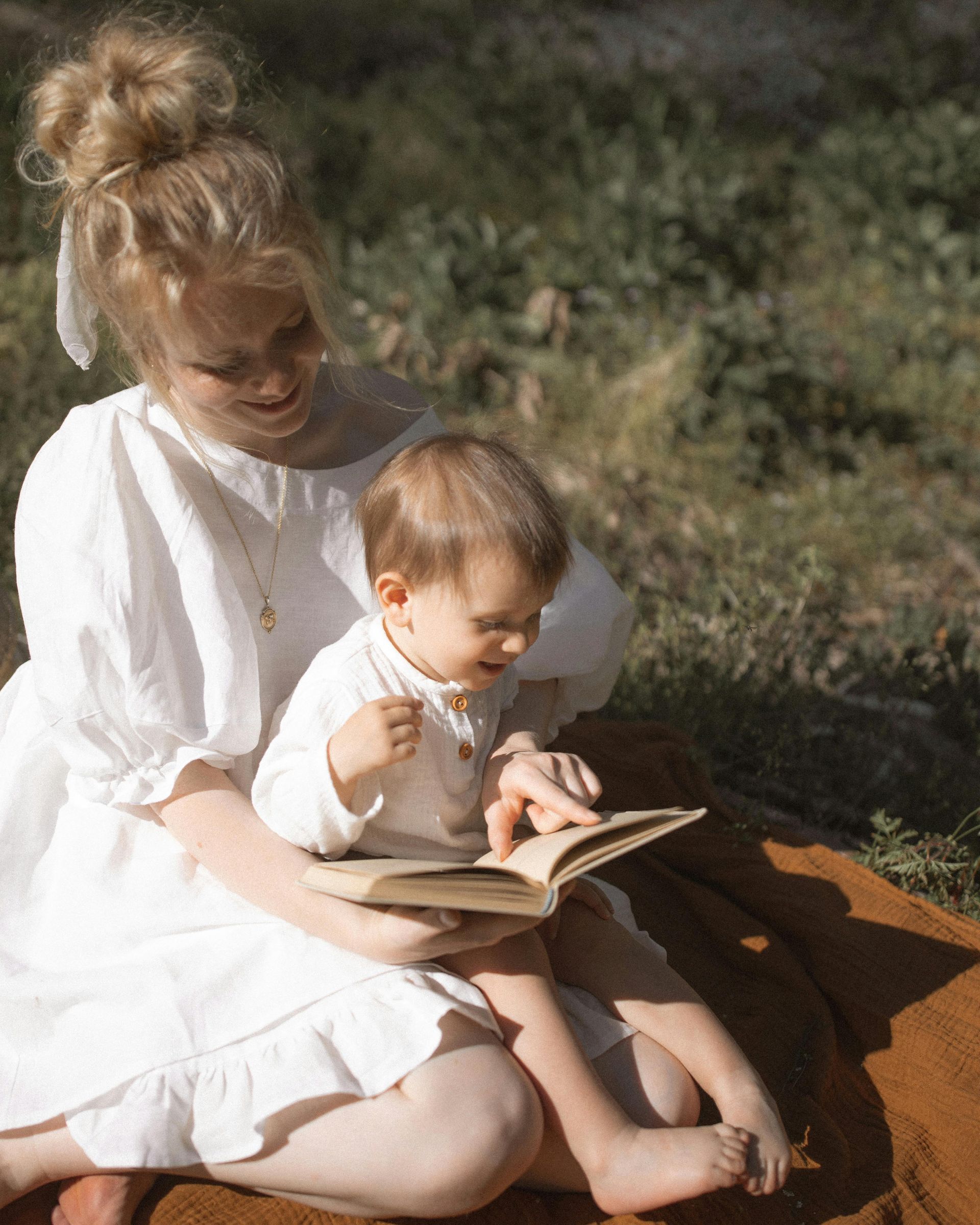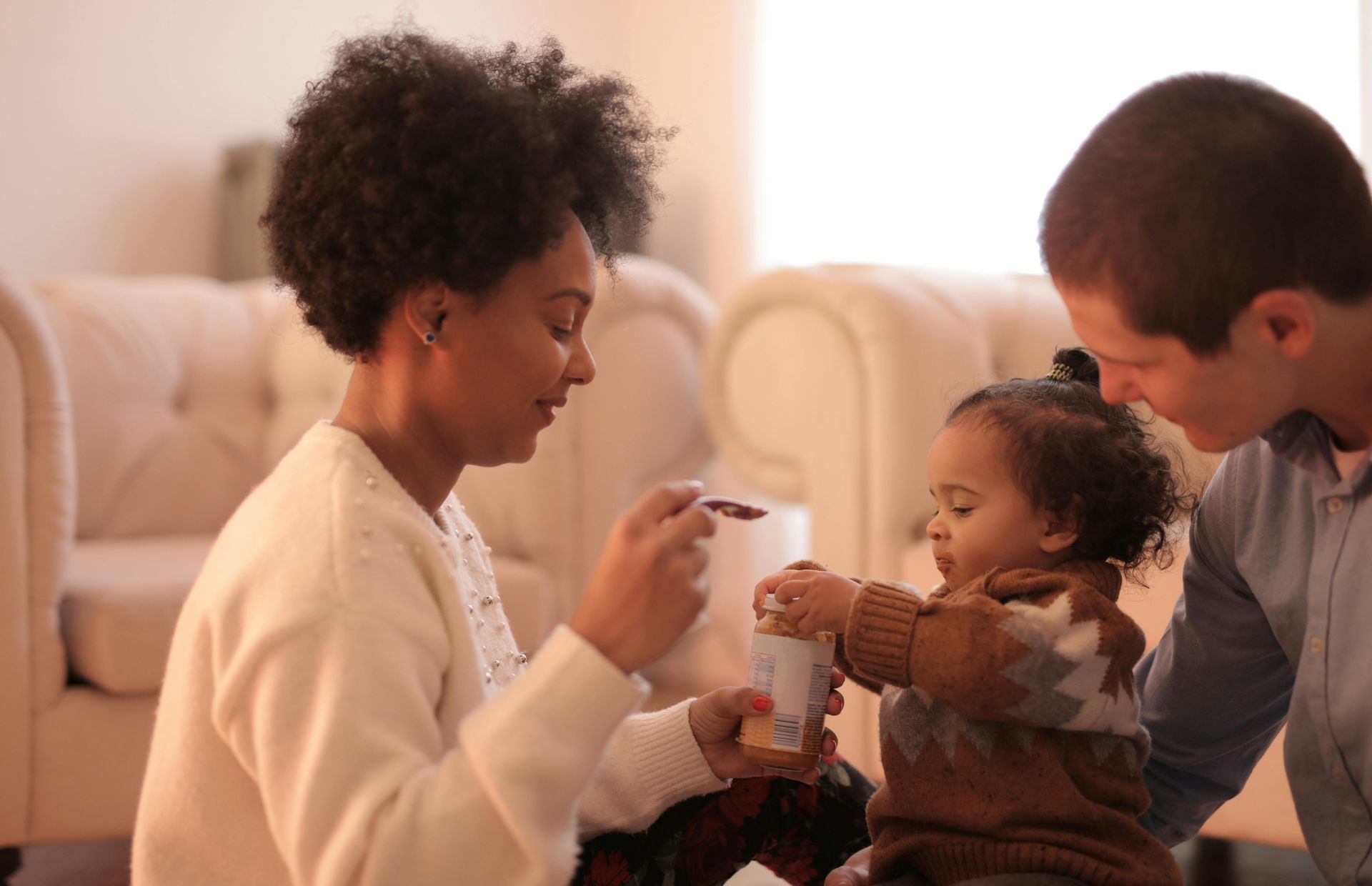Blog
Check out these posts on a range of topics related to Early Intervention.
Best
Practices
Advice, recommendations, information

Here's why it's so important: Foundation for Speech Development: Gestures precede and predict verbal language acquisition. They allow children to communicate their wants, needs, and thoughts before they have the vocabulary to do so verbally. This early success in communication reinforces their efforts and motivates them to continue developing their language skills. Enhances Comprehension and Vocabulary: When children use gestures, caregivers often respond by naming the object or action, creating valuable opportunities for word learning. Research shows that children who use more gestures tend to develop larger vocabularies faster. Gestures also help children connect words with actions, boosting their cognitive understanding of the world Reduces Frustration: Being able to communicate through gestures helps children express themselves and be understood, even without a full vocabulary. This significantly reduces frustration for both the child and caregiver, fostering more positive interactions. Promotes Social Interaction and Joint Attention: Gestures are key in early social development. They enable children to engage with others, share attention (e.g., pointing to something of interest), and participate in social routines like waving hello or goodbye. Joint attention, where both caregiver and child focus on the same object or event, is a major precursor to speech and language development. Supports Cognitive Development: Gesturing can reflect and even change a child's knowledge. It allows children to externalize their thoughts, which can lighten their cognitive load and free up mental resources for other learning tasks. Diagnostic Tool: Observing a child's gestural development can be an early indicator of potential language delays. If a child isn't using gestures in a timely fashion, it can signal a need for early intervention. Which Gestures Develop First? Early gestures are typically deictic gestures , which involve indicating a referent and are tied to the immediate context. These usually emerge between 8 and 10 months of age. The very first gestures to develop often include: Giving/Showing: Around 9 months, infants learn to give or show objects to others, often to share interest or request something. Shaking head (no): This gesture also typically emerges around 9 months, often by turning their head away to indicate they are done with something (e.g., eating). Reaching/Raising arms: Around 10 months, babies will reach for desired objects or raise their arms to be picked up. Waving (hello/goodbye): Around 11 months, children begin to wave intentionally as a social greeting. Open-hand pointing/Tapping: By 12 months, children may use an open-hand point to show intention or tap to draw attention. This often evolves into a more precise index-finger point around 14 months, which is a significant milestone for referencing objects at a distance and is a precursor to symbolic communication. As infants grow into toddlers, their gestural repertoire expands to include more symbolic gestures (e.g., pretending to eat for "hungry," or an "all done" gesture) before fully relying on spoken language.

1. Brain Development: Neural Connections: A baby's brain develops rapidly in the first few years.1 Reading stimulates these neural connections, laying a strong foundation for future learning and cognitive abilities. Auditory and Visual Stimulation: Hearing your voice and seeing colorful pictures activates multiple areas of their brain, including the auditory and visual cortices, memory formation areas, and those responsible for cognitive reasoning and emotional responses. 2. Language and Communication Skills: Vocabulary Expansion: Babies hear a wider range of words and more complex language in books than they might in everyday conversation, enriching their vocabulary. Speech and Sounds: They become familiar with the sounds, rhythms, and cadence of language, which helps them distinguish individual sounds and prepare to speak. Hearing "parentese" (slow, exaggerated sing-song voice) is particularly effective. Communication Concepts: Reading teaches babies about communication, turn-taking, and the connection between spoken words and pictures. Early Literacy: It introduces them to the concept of books, how they work (turning pages, reading left to right), and the idea that text carries meaning, all of which are crucial for later reading success. 3. Social and Emotional Development: Bonding and Connection: Snuggling up with your baby while reading creates a warm, safe, and intimate experience, strengthening your bond and fostering feelings of security and love. Emotional Learning: Babies observe and mimic your expressions and the emotions you convey through your voice as you read, helping them understand and process different feelings. Empathy: Stories allow babies to explore characters' feelings and perspectives, which helps develop empathy and social understanding. Routines: Incorporating reading into a daily routine, like bedtime, provides consistency and a sense of stability that children thrive on. 4. Cognitive Skills: Listening and Memory: Reading builds listening and memory skills as babies become familiar with stories and anticipate what comes next. Attention Span: While babies have short attention spans, regular reading helps nurture their ability to focus and concentrate. Imagination and Curiosity: Books spark imagination, introduce new concepts, and help babies learn about the world around them, including different cultures and experiences. Critical Thinking: Discussing pictures and asking simple questions encourages thinking skills. Tips for Reading to Babies: Start Early: It's never too early to start reading to your baby, even newborns. Make it a Routine: Aim for daily reading sessions, even short ones. Choose Age-Appropriate Books: For young babies, board books with bright colors, high-contrast images, and simple, repetitive text are ideal. Be Interactive: Point to pictures, name objects, make animal sounds, and use expressive voices. Don't worry about sticking to the text exactly; engaging with your baby is key. Follow Their Lead: Let your baby touch, grab, and even chew on books (especially board books). If they get distracted, it's okay to take a break. Repeat Favorites: Babies love repetition, and hearing the same stories multiple times helps them learn. In essence, reading to babies is a simple yet powerful activity that profoundly impacts their cognitive, language, social, and emotional development, setting them up for success in school and life.

Early Intervention (EI) providers coach families to embed learning in daily routines because it is a highly effective, family-centered, and sustainable approach to supporting a child's development. Here's a breakdown of the key reasons. 1. Natural and Meaningful Learning: Children learn best in natural environments: Young children, especially infants and toddlers, learn through everyday interactions, play, and experiences within their familiar surroundings (home, childcare, community). Embedding learning into daily routines like mealtime, bath time, playtime, or getting dressed makes the learning meaningful and relevant to the child's life. Increased opportunities for practice: Daily routines offer numerous, consistent opportunities for a child to practice new skills throughout the day, every day. This frequent repetition in varying contexts helps solidify learning and promotes generalization of skills. Contextualized learning: Skills learned within a real-life context are more likely to be used functionally. For example, practicing communication skills during snack time helps a child learn to ask for "more" or "done" when it's most relevant. 2. Family Empowerment and Capacity Building: Parents are the primary teachers: Early Intervention recognizes that parents and caregivers are the most consistent and influential people in a child's life. Coaching empowers families to be their child's primary educators, building their confidence and competence in supporting development. Family-centered approach: EI is mandated to be family-centered, meaning services are individualized and responsive to each family's unique strengths, needs, priorities, and culture. Coaching allows providers to collaborate with families to identify goals and strategies that fit seamlessly into their existing routines, rather than adding extra "therapy homework" that can be overwhelming. Sustainable strategies: By teaching families how to integrate interventions into their daily lives, the benefits extend far beyond the provider's visit. Families gain lasting skills and strategies they can continue to use long-term, ensuring ongoing progress even when professional services decrease. Reduced parental stres: When learning is integrated into existing routines, it feels less like an added burden and more like a natural part of family life. This can reduce stress for parents who are already managing busy schedules. 3. Enhanced Child Outcomes: Improved skill acquisition and generalization: Research shows that embedding instruction into routines leads to better child outcomes. Children make greater developmental gains when they have repeated learning opportunities in meaningful daily activities. They are also more likely to use the skills they learn across different situations and with various people. Holistic development: Embedding learning in routines can target a wide range of developmental areas simultaneously (e.g., communication, fine motor, social-emotional, cognitive) within the context of natural interactions. Stronger relationships: The coaching model fosters stronger relationships between the child and caregiver as they engage in meaningful, goal-directed interactions. It also builds a supportive alliance between families and interventionists. 4. Effective Coaching Model: Collaborative process: Coaching involves a collaborative and interactive process where providers and families jointly plan, observe, practice strategies, reflect on what worked, and receive feedback. Adult learning principles: The coaching approach aligns with adult learning principles, focusing on building competence and confidence through active participation and problem-solving, rather than simply direct instruction. In essence, coaching families to embed learning in daily routines shifts the focus from isolated "therapy sessions" to creating continuous, meaningful learning opportunities within the child's natural environment, ultimately empowering families and maximizing a child's developmental potential.

Meal Times (Breakfast, Lunch, Dinner, Snacks): Communication: Talking about the food ("What are we eating?", "Do you want more?"), asking for items ("Please pass the milk"), describing tastes and textures ("This apple is crunchy!"), and having conversations about the day. Fine Motor Skills: Using utensils, pincer grasp for small foods, opening containers, pouring drinks. Self-Help Skills: Wiping mouth, putting dishes in the sink, helping set or clear the table. Cognitive Skills: Identifying colors of food, counting pieces of fruit, sorting food groups. Bath Time: Language & Vocabulary: Naming body parts, describing actions ("wash," "splash," "rinse"), singing songs (e.g., "Rubber Ducky"). Sensory Exploration: Playing with water, bubbles, sponges, toys; experiencing different temperatures. Self-Help Skills: Helping wash parts of their body, reaching for soap, drying off with a towel. Concept Development: "Wet/dry," "in/out," "empty/full." Getting Dressed/Undressed: Self-Help Skills: Practicing pulling on pants, putting arms through sleeves, zipping, buttoning (with help as needed). Body Awareness: Naming clothes and body parts as they dress. Following Directions: "First put on your shirt, then your pants." Color & Shape Recognition: Identifying colors of clothes, talking about patterns. Play Time (Free Play & Structured Play): Social-Emotional: Sharing toys, taking turns, expressing emotions through play, imaginative play. Language & Communication: Describing what they're doing, asking questions, responding to questions, storytelling. Cognitive Skills: Problem-solving with puzzles or blocks, sorting toys, building structures. Gross & Fine Motor Skills: Running, jumping, throwing a ball, manipulating small toys, drawing, cutting. Bedtime Routine: Language & Literacy: Reading books together (pointing to words, discussing pictures, asking "what happens next?"), singing lullabies, telling stories. Self-Help Skills: Brushing teeth, putting on pajamas, getting into bed. Emotional Regulation: Calming down, talking about the day, expressing feelings. Bonding: Creating a consistent, comforting ritual for connection and security. Transitions (e.g., leaving the house, coming home, going from one activity to another): Following Directions: "Time to put on your shoes," "Let's put the toys away before we go." Predictability: Using visual schedules, singing a transition song, giving warnings about upcoming changes. Emotional Regulation: Acknowledging feelings about transitions, helping them cope with change. Chores/Helping Around the House: Responsibility & Independence: Putting toys away, helping sort laundry, wiping spills, feeding pets (age-appropriately). Following Directions & Sequencing: "First, pick up the blocks, then put them in the bin." Fine & Gross Motor Skills: Carrying items, reaching, bending, grasping. Math Concepts: Sorting, counting, matching. The key is that these are not extra activities, but rather opportunities within the family's existing routines to naturally weave in interactions that promote a child's development across all domains.
